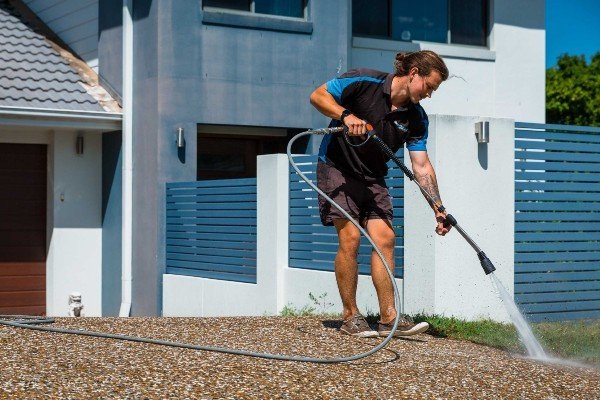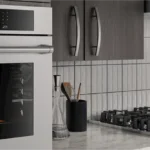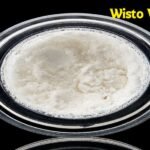In the quest for a pristine home environment, high pressure house cleaning has emerged as a formidable ally. Whether it’s removing stubborn grime from outdoor surfaces or revitalizing indoor spaces, the power of high pressure cleaning techniques cannot be overstated.
In this comprehensive guide, we’ll delve into the world of high pressure cleaning, demystifying its techniques, exploring its benefits, and providing practical tips for achieving exceptional results.
Understanding High Pressure House Cleaning
At its core, high pressure house cleaning involves the use of specialized equipment to deliver pressurized water streams for effective dirt and grime removal. The equipment typically consists of a high-pressure washer, which generates water pressure far beyond that of a regular garden hose. This increased pressure enables the water to penetrate and dislodge dirt, mold, mildew, and other contaminants from various surfaces. For instance, high pressure cleaning in Gold Coast is a popular service due to the area’s coastal climate, which can lead to the buildup of salt, sand, and other debris on homes and buildings.
The Equipment
Central to the effectiveness of high pressure house cleaning is the pressure washer itself. These machines come in a variety of types and sizes, ranging from compact electric models suitable for light-duty tasks to robust gas-powered units capable of tackling heavy-duty cleaning jobs. When selecting a pressure washer, consider factors such as pressure output (measured in pounds per square inch or PSI) and water flow rate (measured in gallons per minute or GPM), as these specifications determine the machine’s cleaning power.
Outdoor Applications
High pressure house cleaning excels in outdoor applications, where surfaces are exposed to the elements and tend to accumulate dirt and grime over time. Some common outdoor surfaces that benefit from high pressure cleaning include:
- Driveways and Walkways: Over time, driveways and walkways can become stained with oil, grease, and other substances. High pressure cleaning effectively removes these stains, restoring the appearance of the concrete or pavement.
- Decks and Patios: Wooden decks and concrete patios are prone to mold, mildew, and algae growth, especially in damp or shaded areas. High pressure cleaning removes these unsightly contaminants, rejuvenating outdoor living spaces.
- Fences and Siding: Whether made of wood, vinyl, or metal, fences and siding can accumulate dirt, grime, and even algae over time. High pressure cleaning strips away these layers of buildup, revealing the pristine surface beneath.
- Outdoor Furniture: From plastic lawn chairs to metal tables, outdoor furniture can benefit from periodic high pressure cleaning to remove dirt, pollen, and other debris.
Indoor Applications
While high pressure house cleaning is commonly associated with outdoor surfaces, it can also be employed indoors for certain applications. However, indoor use requires caution, as the high pressure water can damage delicate surfaces or force water into unwanted areas. Some indoor applications where high pressure cleaning may be appropriate include:
- Tile and Grout: High pressure cleaning effectively removes dirt, grime, and mold from tile and grout surfaces in kitchens, bathrooms, and other tiled areas.
- Concrete Floors: In garages, basements, and workshops, concrete floors can benefit from high pressure cleaning to remove oil stains, tire marks, and other stubborn residues.
- Industrial Settings: High pressure cleaning is commonly used in industrial settings to clean machinery, equipment, and manufacturing facilities.
Best Practices for High Pressure House Cleaning
While high pressure cleaning can deliver exceptional results, it’s important to follow best practices to ensure safety and effectiveness:
- Wear Protective Gear: When operating a pressure washer, wear appropriate protective gear, including safety goggles, closed-toe shoes, and hearing protection.
- Start with a Lower Pressure: Begin by testing the pressure washer on a small, inconspicuous area to gauge its effectiveness. Gradually increase the pressure as needed, taking care not to damage the surface being cleaned.
- Maintain Proper Distance: Keep the nozzle of the pressure washer at a safe distance from the surface being cleaned to prevent damage. As a general rule, maintain a distance of at least one to two feet and adjust as needed based on the surface and pressure level.
- Use the Right Nozzle: Pressure washers typically come with a variety of nozzles, each suited for different cleaning tasks. Choose the appropriate nozzle based on the surface being cleaned and the desired pressure level.
- Work Methodically: When cleaning large surfaces, work in sections, overlapping each pass slightly to ensure thorough cleaning. Avoid lingering in one spot for too long, as this can cause damage.
Conclusion
In conclusion, high pressure house cleaning offers powerful solutions for tackling dirt, grime, and contaminants on a variety of surfaces, both indoors and outdoors. By understanding the principles of high pressure cleaning, selecting the right equipment, and following best practices, homeowners can achieve exceptional results and enjoy a cleaner, more pristine living environment. So, unleash the power of high pressure cleaning and transform your home today!



